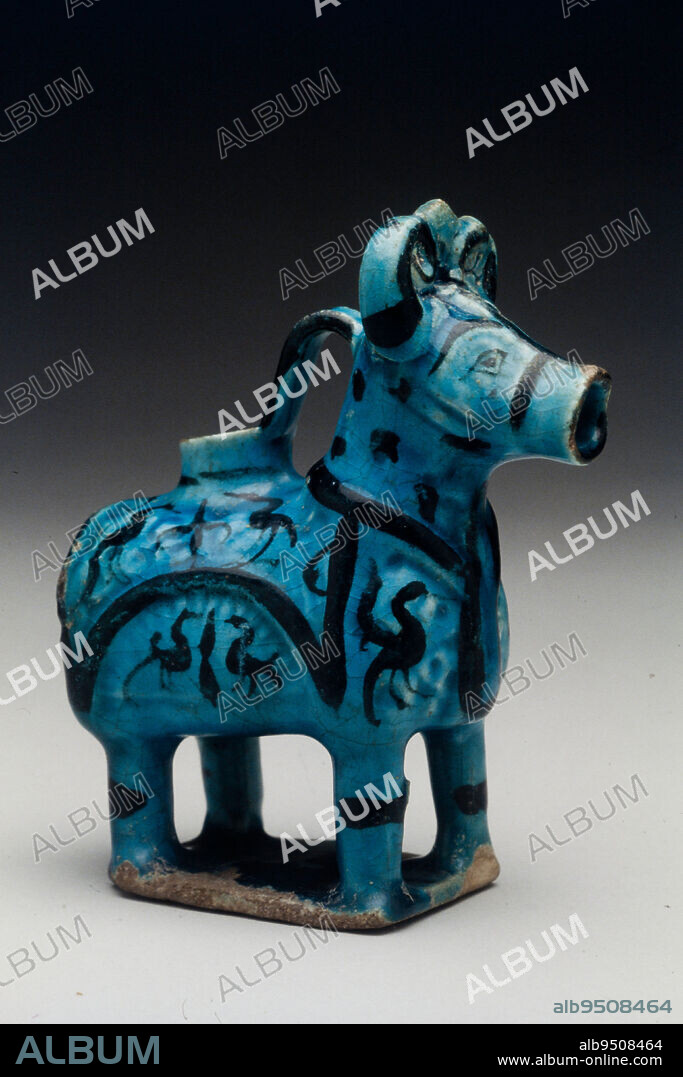alb9508464
Aquamanile (Ram-shaped Ewer), 13th-14th century, 7 in. (17.78 cm), Stonepaste with clear turquoise glaze, black underglaze-painted decor, Kashan ware, Iran, Seljuk period (1038- c. 1194), Although round ceramic sculpture is relatively rare in Islamic art, decorated figures in both metal and ceramic ware were popular in Iran and Turkey during Seljuk rule. The bull shape, shown here in two examples, was the most common, but camel, ram, and lion-shaped vessels have survived as well.

|
Zu einem anderen Lightbox hinzufügen |
|
Zu einem anderen Lightbox hinzufügen |



Haben Sie bereits ein Konto? Anmelden
Sie haben kein Konto? Registrieren
Dieses Bild kaufen

Untertitel:
Siehe automatische Übersetzung
Aquamanile (Ram-shaped Ewer), 13th-14th century, 7 in. (17.78 cm), Stonepaste with clear turquoise glaze, black underglaze-painted decor, Kashan ware, Iran, Seljuk period (1038- c. 1194), Although round ceramic sculpture is relatively rare in Islamic art, decorated figures in both metal and ceramic ware were popular in Iran and Turkey during Seljuk rule. The bull shape, shown here in two examples, was the most common, but camel, ram, and lion-shaped vessels have survived as well.
Bildnachweis:
Album / quintlox
Freigaben (Releases):
Model: Nein - Eigentum: Nein
Rechtefragen?
Rechtefragen?
Bildgröße:
3744 x 5616 px | 60.2 MB
Druckgröße:
31.7 x 47.5 cm | 12.5 x 18.7 in (300 dpi)
Schlüsselwörter:
ALLGEMEIN • AQUAMANILE • IRAN • ISLAMISCHE KUNST • KAMEL • KAMELE • METALL • TIER: WIDDER • TÜRKEI • WIDDER (TIER) • WIDDER
 Pinterest
Pinterest Twitter
Twitter Facebook
Facebook Link kopieren
Link kopieren Email
Email
